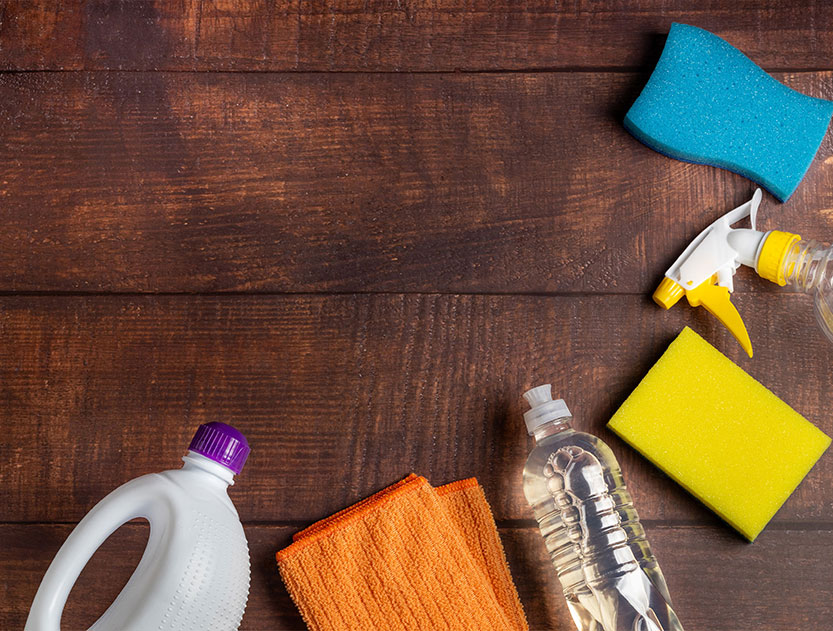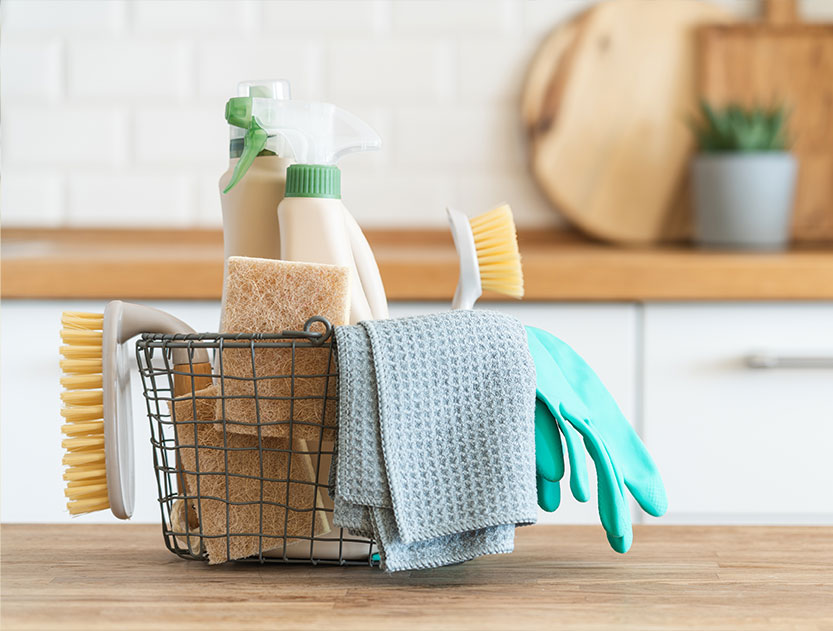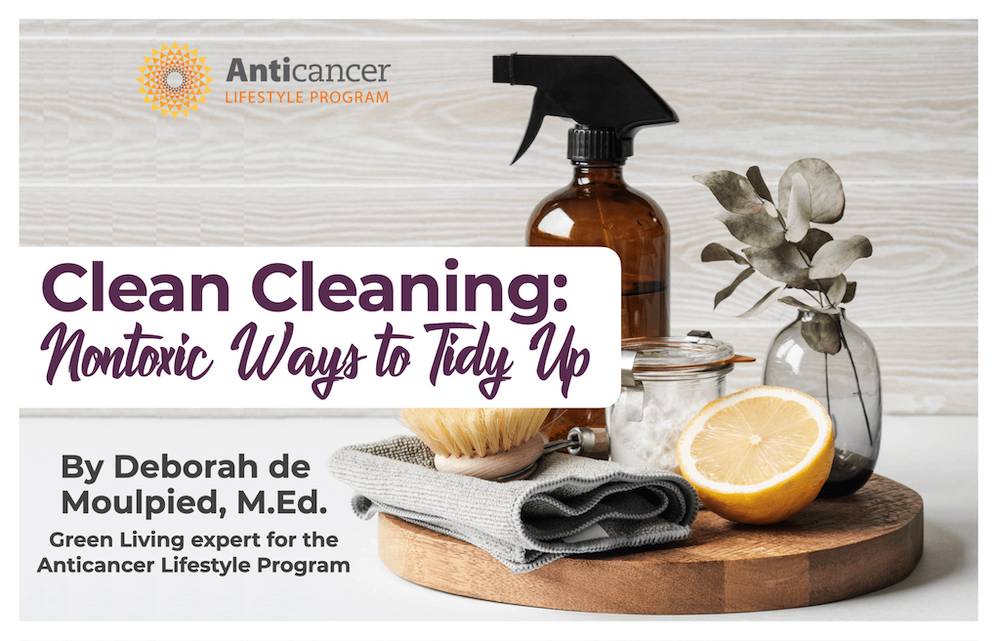Anticancer 7-Day Environment Kickstart
Day 4: Clean Cleaning
REFLECT
Most homes have cupboards and shelves loaded with cleaning products. From room deodorizers and tile sprays to stain removers and stovetop polishers, cleaning products are used in almost every room of the house. Some of these are so-called “harsh cleaners,” capable of producing either short-term or long-term health issues, including eye irritation, difficulty breathing, skin irritation, and headache.
Unfortunately, cleaning products can be a leading cause of toxic air pollution in our homes. Many chemicals in cleaning products can off-gas and create multiple Volatile Organic Compounds, or VOCs, reducing air quality.
It’s often hard to tell what is actually in these products. Except in the states of California and New York, cleaning product manufacturers in the U.S. are not required to list the ingredients in their products.
Visit the areas in your home where you store cleaning products, such as your kitchen, bathroom, and laundry room. List the cleaning products you use, and count the total number.

REVIEW
If you’re like most people, you use quite a few different cleaners! Watch this 4+ minute video to learn about common chemicals found in cleaning products. Many of these are chemicals of concern — known to cause cancer, mutate cells, or disrupt the human hormone system (so-called “endocrine disrupting chemicals”, or EDCs).


Now that you are familiar with some of the hazards of common cleaning products, view this ~4 minute video to learn how to choose safer cleaning methods and products.
IDENTIFY AND COMMIT
Start with one area of your home. Let’s use the laundry room as an example. Identify all the cleaning products you use to clean your clothing. Search for your laundry detergent, dryer sheet, fabric softener, stain remover, and whatever else you might use, on one or more of these helpful apps: Clearya, Yuka, EWG’s Healthy Living app, or the Household Products Database.
Which app or apps did you find most helpful? How did your laundry products rate? If they didn’t rate well, search for safer products on the app of your choice. Ask yourself if you really need all of these items to clean your clothing.
If your products didn’t rate well, commit to finding and purchasing safer selections, once the current products are used up.
Commit to repeating this process in other areas of your home.

Tomorrow, we’ll look at ways to keep your indoor air clean.
Note: If you missed Day 3, you can complete it here.

Bonus
Clean Cleaning: Nontoxic Ways to Tidy Up
For more information on healthy cleaning, see our eBook

Bonus
Best Nontoxic Cleaning Products: Which Brands You Can Trust?
To learn more about the safety profile of specific brands, see our guide
